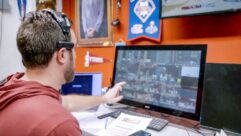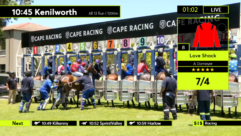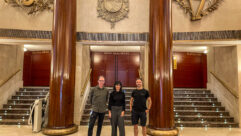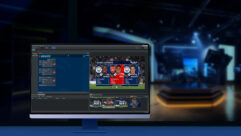New York State, October 2012
… A It’s not easy scoring a hit in today’s busy media landscape. But that’s exactly what singer-songwriter Daryl Hall has done with Live from Daryl’s House, the Webcast-turned-syndicated-TV-show on the Palladia Channel. The show, which Hall started back in 2007, has drawn critical acclaim for its eclectic mix of musical guests and genres; its unscripted, real-life moments; and its powerful, raw musical performances.
Taped at Hall’s house in rural upstate New York, the show has become a favorite among musicians and fans. There’s plenty of shop talk, working out riffs, and even a dinner break as guests hang out in the converted barn that hosts the sessions.
As Hall’s long-time engineer Peter Moshay explains, the show’s authenticity is part of the appeal – there’s nothing contrived about it. “This is really Daryl’shome,” he explains. “We come in and build the set for every show and tear it down afterward.”
Moshay mixes the show live on a PreSonus StudioLiveâ„¢ 24.4.2 digital console. “Most of what I’m doing during the taping is dealing with monitor mixes,” he says. “Since the StudioLive gives me ten monitor sends, everybody gets their own monitor mix.”
As Moshay observes, the space is pretty cozy. “The room looks a lot bigger on TV than it really is,” he says. “It’s actually pretty cramped. There’s nowhere to really sit down, and once the room is filled with musicians and production people, there’s barely room to walk.”
The StudioLive is set up in an adjacent room but Moshay spends most of his time away from the desk. “I use StudioLive Remote for iPadA® to get in position to hear everyone’s wedges.” Each musician also uses QMixâ„¢, enabling them to control their own mix. “It took about five minutes for the guys to figure out how to use it, and then everyone was like, ‘don’t ever change this!’ Once we started using the wireless control, there was just no way to ever go back.”
The musicians’ ability to control their monitors is great for the creative flow as well, Moshay explains. “They’re usually working out the arrangements on the fly, and being able to hear each other and communicate is huge. There’s no more shouting across the room.”
Audio is recorded live to multitrack, taking the output of the StudioLive into Alesis HD24XR hard-disk recorders. “It’s old technology but it’s what we started with five years ago,” Moshay explains. “There wasn’t room to set up a computer, and there still isn’t, so I export the tracks to a computer for editing.”
With no acoustic treatment to speak of, and a peaked ceiling that ranges from 15 to 21 feet high, there’s very little in the way of separation. “Everything in the room is wide open, and there’s no way to really duck any of the mics, because it changes the sound,” he explains. “So when I go to mix the recordings, there’s plenty of leakage across the tracks.”
And that, says Moshay, is a big part of the show’s appeal. “It’s kind of a musician’s show. A lot of musicians are familiar with the show’s sound. It sounds real, like you’re live in the room, and that’s what people like. So I do everything I can to tame the levels, but I keep all that leakage in the mix. I want people to feel like they are there in the room with us.”
The StudioLive’s Class A XMAXâ„¢ preamps are a solid part of that sound. “Because we have such a wide range of guests, every show is different,” says Moshay. “Some shows they’ll come out rocking pretty hard, other shows we’ll have lower dynamics and more ballads. The StudioLive’s sound is clean and uncolored. It can go from one extreme to the other, and it sounds great no matter what we’re doing with it.”
Watch this video by Peter Moshay
A about how he uses the StudioLive 24.4.2 for Live from Daryl’s House.
###
Founded in 1995, PreSonus Audio Electronics, Inc., is a leading designer and manufacturer of audio-recording software, hardware, and related accessories. PreSonus software, microphone preamps, signal processors, digital audio interfaces, mixers, control surfaces and other products are used worldwide for recording, sound reinforcement, broadcast, sound design, and Internet audio.










